Santa Maria Antiqua, the oldest church in the Forum, is at last due to reopen after extensive repairs and restorations. It houses some exceptional wall-paintings. See the following review in the New York Times.
Category Archives: Rome and Lazio
The Roman Forum
‘Archaeology often brings to light relics—mysterious foundations, tumbled blocks, a charred sacrificial pit, the decaying stumps of dead houses—fascinating to the scholar but a stunning bore to the simple visitor.’ So wrote Dilys Powell in The Villa Ariadne. Archaeologists can be monomaniacs and their interests are often distressingly narrow. So it was with some anticipation that I took up David Watkin’s The Roman Forum, whose contentions are very clear: ‘Archaeologists have eliminated much evidence of the fascinating post-antique life of the Forum,’ and their labours have made ‘visiting parts of the Forum about as attractive as looking into the hole made in New York on 9/11.’ Ouch! These accusations run like leitmotifs throughout the book, together with the curious conspiracy theory that guidebooks are complicit; that there are things they ‘do not want us to see’.
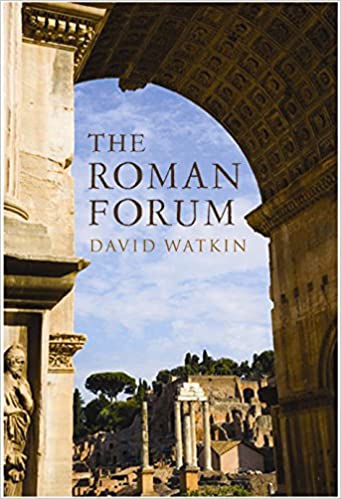
If one works night and day to produce guidebooks, it is difficult not to get on the defensive. The Portico of the Dii Consentes doesn’t ‘turn out’ to be a modern reconstruction. Pay attention to your Blue Guide! It clearly says that it dates from 1858. There is no plot to keep visitors in the dark about the churches of San Lorenzo in Miranda or Santi Luca e Martina. They are just never, ever open. But for Watkin, everything was better in the time of Piranesi. Piranesi, he tells us, with the authority of one who knew him in a former life, recorded the Forum ‘at the last time when it was still a place of poetry, capable of inspiring great painters, writers and thinkers.’ Glum stuff, but the threnody does begin to strike a chord and the aimiable style in which the bad news is delivered soon reels you in. Watkin laments the fact that the Forum has been turned inside out: its surviving churches open away from it, no longer into it; it has been severed from the life of the city and turned into a visitors’ theme park. Up until a very few years ago, entry was free and one could use the Forum as a thoroughfare; Romans going about their daily business could loiter and linger in it. Now you have to queue to be admitted through a turnstile, custodians are bossy and offhand, and no one who is not a tourist (or an archaeologist) ever goes there. The magnificent ‘challenge of the relationship between ancient and modern’ has been obscured.
Despite the underlying crotchetiness, the book is immensely enjoyable. Watkin’s love for the Forum, his breadth of knowledge, and his wistfulness about what might have been (in a Peter Pan world) are ingenuous, impressive and infectious—a beguiling combination. The chapter on the despoliation of the Forum’s monuments in the service of the new St Peter’s is a superb read. No visitor should ever again imagine that the mere march of time had anything to do with it. What Watkin cannot admit, though, is that if archaeologists hadn’t got their hands on the Forum when they did (in the late 19th century), the urban planners certainly would have. And the challenging relationship between ancient and modern would now be as desperate a tussle there as it is at Largo Argentina.
Nevertheless, if you’re travelling to Rome—either for the first or the fiftieth time—I recommend that you get this book. Not only will it add whole layers of meaning to your visit, but it will also force to you answer the following testing questions: if archaeologists are to be banished, who will take their place (and who will pay for it)? What is the point of a desert like the Forum in the centre of a busy and increasingly cramped-feeling capital city? And whose opinion was nearer to the mark: Palladio’s, for whom the Forum offered ‘not the spectacle of ancient glory but rather the possibility of recreating it’; or Pevsner’s, for whom the Forum belongs ‘to the civilisation of Antiquity, not to what we usually mean when we speak of European civilisation’? Watkin loves the Baroque churches that were built over the ancient ruins in the 17th century. But did their architects believe they were ‘recreating’, or did they believe they were moving forward into a ‘modern’ era?
Reviewed by Annabel Barber
Blue Guide Rome (10th edition) has extensive coverage of the Forum, with a map of the site and detailed notes on all its monuments, past, present and conjectural.
Whispering City: Rome and its Histories
I first arrived in Rome in January 1966 when I was eighteen. I had had a long journey by train from London but I have never forgotten the emotional impact as my taxi sped by the Forum. All the hours I had spent trying to construe the speeches of Cicero and the odes of Horace gained meaning and since then I have never been able completely to separate ancient texts from the places they were created.
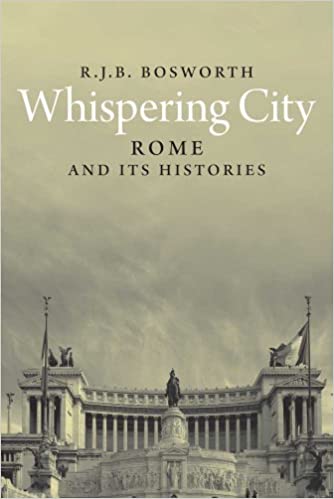
I still know of no other city where the histories and myths intermingle quite so powerfully as they do in Rome, for any period of its past one chooses. Even the traditional founders of the city, Romulus and Remus, were heirs to the myth of Aeneas. What Bosworth achieves in this sophisticated and penetrating history is to show how the Roman pasts have pervaded the political and religious life of the city since 1800. The revolutionary French, the austere and embittered popes, the leaders of the new secular government after 1870, Mussolini with his bombast of a rediscovered empire, none of these could never escape from or fail to manipulate some precedent. Every leader sought to find the ‘right’ Roman past—republican, imperial, Christian or nationalist—to use for political resonance whatever the cost. Mussolini blindly destroyed large parts of medieval Rome to claw out the imperial ruins that lay buried beneath it.
What I loved about this book was Bosworth’s acute sensitivity to every nuance of Rome’s past. Symbols were refashioned to meet each contemporary need, however transient it might prove. I warmed to the story of how, during the ‘revolution’ of 1848–49, the cross on St Peter’s was, in the absence of the fugitive pope, painted in republican colours, while in the 1948 elections, the Italian communists linked Giuseppe (Joseph) Garibaldi, to another Josef, Stalin. (The Church responded with ‘At the urn, God sees you but Stalin does not’.) And I never knew that the last surviving ship of the papal navy was a paddle-boat called the Immaculate Conception.
The perpetual game-playing between popes, outraged at the loss of their patrimony in 1870, and city rulers achieved high levels of drama. When in 1889 the Roman government launched a grand unveiling of the statue of Giordano Bruno, burned by the Inquisition in 1600, Pope Leo XIII retaliated by spending the day prostrate before a statue of St Peter. When the Fascists commemorated the anniversary of the March on Rome on 28th October, Pope Pius XI countered with the institution of a new feast day, of Christ the King, for the last Sunday of October. In the great public ceremonies, blackshirts offered no competition to a pope clothed, as Pius was on one occasion, ‘in a huge silver mantle interwoven with gold’. Whatever Il Duce’s ambitions, no one knelt when Mussolini passed by. They did in their thousands when the pope did. Well might Pius XII reassert Rome’s primacy as the universal Christian centre of civilisation when the Fascist regime collapsed ignominiously in 1943. One of his successes was to secure the placing of figleaves on the virile genitalia of Fascist heroic statuary during the Holy Year of 1950.
Assiduously researched and always absorbing, this book should have an appeal far beyond lovers of Rome. Anyone sensitive to history is aware of how easily the past becomes mythical and /or fugitive. Sniff the air in Rome and, above the traffic fumes, you can sense the currents of nostalgia merging, separating, remingling, swirling around the ruins of past and present. Bosworth shows how even the most determined rewriters of history, Mussolini prominent among them, were out-manoeuvred by the insistent presence of alternative myths which subverted their proclamations of the revival of an ‘eternal city’. Rome is indeed ‘eternal’ but primarily, perhaps, in its ability to eternally manipulate its past.
Reviewed by Charles Freeman, historical consultant to the Blue Guides and author of Sites of Antiquity: 50 Sites that Explain the Classical World. His Holy Bones Holy Dust, a study of the medieval cult of relics, is reviewed here.
Constantine: Unconquered Emperor, Christian Victor
In Istanbul, on the north side of Divan Yolu, the street that follows the course of the Mese or ‘Central Way’ of old Constantinople, stands a decayed porphyry stump known as Çemberlitaş, the ‘Hooped Column’. In its heyday it would have been much more splendid, for it was, according to Blue Guide Istanbul (6th ed. 2011), ‘erected by Constantine to commemorate the dedication of the city as capital of the Roman Empire on 11th May 330. It stood at the centre of the Forum of Constantine, a colonnaded oval portico adorned with statues of pagan deities, Roman emperors and Christian saints, and thought to have been the inspiration for what Bernini later built in front of St Peter’s in Rome.’ What is also interesting about the column is the statue that would have crowned it, a colossal likeness of Constantine as Sol Invictus, the Unconquered and Unconquerable Sun, with the orb of the world in his hand and a crown of brazen sunrays glittering on his head.
In his Hymn to God the Father, John Donne makes use of a popular metaphysical pun:
…swear by Thyself, that at my death Thy Son
Shall shine as he shines now…
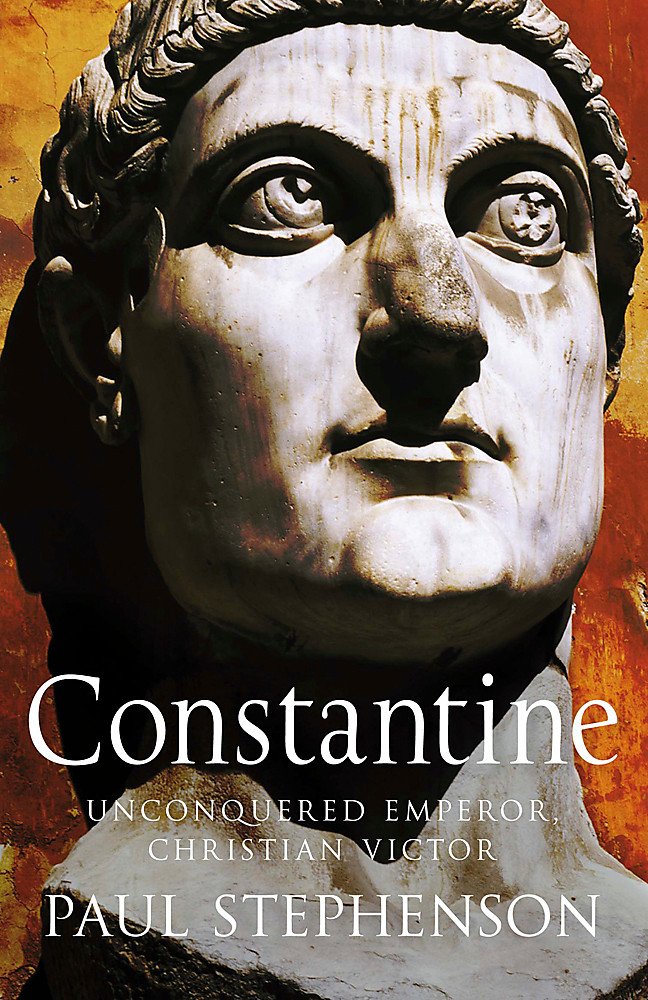
The transference of pagan sun of the heavens to Christian son of God, victorious over death, is something that happened long before Donne’s time. And Constantine’s adoption of the sun/son cult and his public portrayal of himself as brazen victor were significant and deliberate—at least Paul Stephenson thinks so. But why? Was it because he was sincere in his Christian faith? Or was it simple political expediency? Biographies have been written that seek to prove both these theses. Stephenson’s argument is slightly different. Constantine’s devotion to Christ is not what turned Christianity into the majority faith of the Eastern Empire. He is neither the hero that the partisan Christian historian Eusebius sought to portray (4th century) nor the villain that the apostased Catholic convert Edward Gibbon depicts (18th century), with sour scorn, as using ‘the altars of the church as a convenient footstool to the throne of the empire’.
Instead, Stephenson focuses on something else: the army. Constantine grew up in an age when emperors were raised high and then capriciously felled by their barracksmen. The military had enormous power, which, in the right hands, could be cleverly channelled. For Stephenson, Constantine used the army as the driving force and ‘chief instrument of his political will’, aggressively adopting the Victor persona, something which the army accepted wholeheartedly because of what Stephenson calls the ‘established Roman theology of victory’. After the decisive Battle of the Milvian Bridge, when Constantine defeated his rival Maxentius and sent him to his death in the Tiber waters, floundering helplessly in his heavy armour, the bringer of that victory was Christ. We need not trouble ourselves with how, with whether Constantine really did have a vision of a Cross. The fact is that from then on it was Christ and not Zeus or Sol who became the emperor’s patron deity and it was under Christ’s banner that the imperial legions fought.
Constantine’s mother had been a Christian but the world into which her son was born was a pagan one. Christ, like any other god, was a divine being to be flattered and appeased. Constantine’s devotion to his god was not that of a pious Christian as we would understand the term today. Nor was it simply a cyncial political stunt. The truth falls somewhere in between, and Constantine’s reign is, Stephenson thinks, ‘a case study in the interaction of faith and power.’
Readable and convincing, the book presents a portrait of a great soldier and propagandist, a man who believed his earthly power and success were due to the intervention of the god of the Christians. Thus it was that he adopted that cult as his personal totem. He certainly never heard or believed that the meek were blessed and would inherit the earth.
Reviewed by Annabel Barber
Comments on Blue Guide Literary Companions: Rome, London, Venice
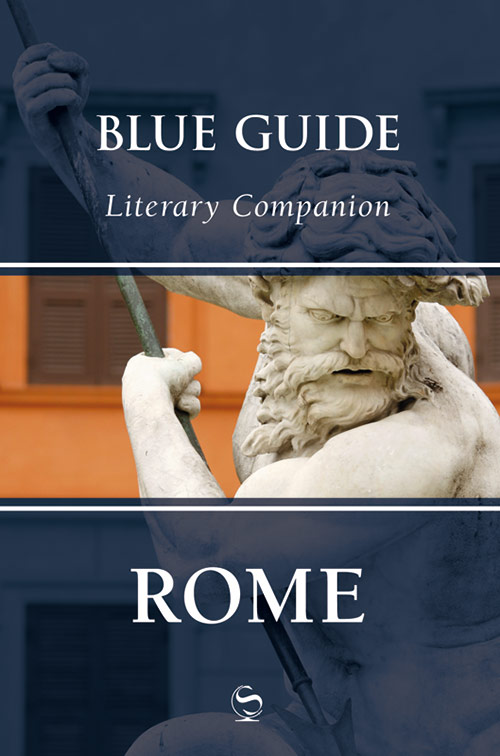 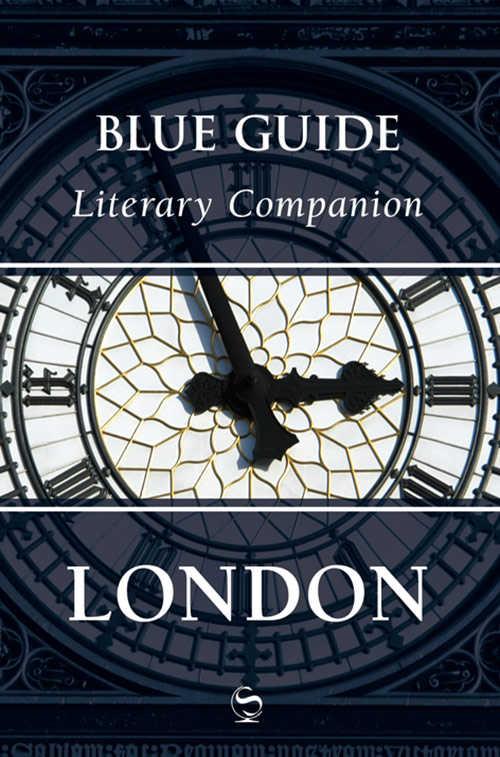 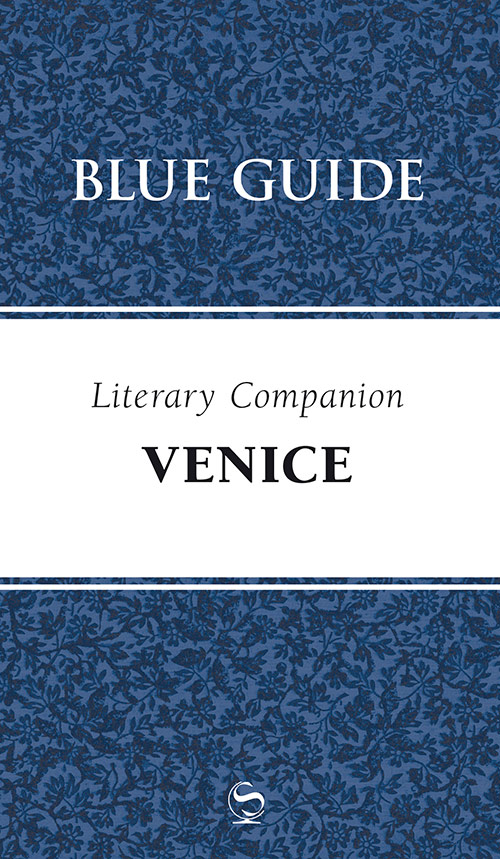 |
Entertaining anthologies of writing–extracts from novels, letter, diaries, poems, histories, guide books–about or set in the destination. Lively introductions to each excerpt make them a pleasure to browse, a mine of fascinating insights to enjoy at home or to supplement a guide book on site.






